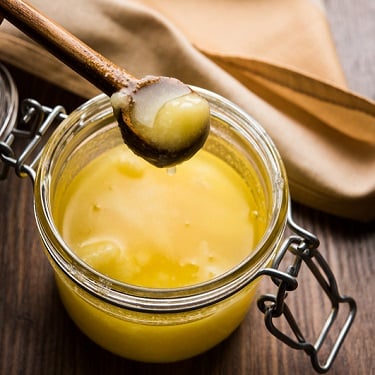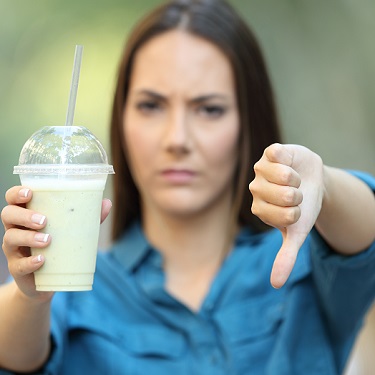How Many Calories Do I Burn a Day?

It’s the age-old question: how many calories do I burn a day? While the concept of burning calories may seem rather straightforward, it’s actually quite complex with many factors contributing to its ambiguity.
What is a Calorie?
To figure out how many calories you burn a day, it may be useful to first determine a good definition of a “calorie.” A calorie is simply a measure of energy. Different foods have different measures (or units) of energy they provide. For example, a cup of skim milk contains about 90 calories, whereas 2 tablespoons of peanut butter contain around 188 calories. In fact, macronutrients (particles that make up the foods and drinks you consume) each have their own caloric values:
- Carbohydrates = 4 calories per gram
- Fats = 9 calories per gram
- Proteins = 4 calories per gram
- Alcohol = 7 calories per gram
But, it’s not quite that simple. Calories are only part of the equation. You see, foods actually require energy to burn and digest them. For example, celery is very high in roughage/fiber and requires more calories to digest it than most other options.
For those of you with a bit of an obsessive-compulsive streak, such an inexact science can be maddening. The best you can do is estimate the number of calories in your foods and see how your body and weight respond over time.
You can look up the nutrient values of foods easily with online databases like MyNetDiary, My Fitness Pal, Calorie King, nutritional labels, or just use your preferred search engine to find the food’s caloric value.
How Many Calories Do I Burn a Day?
Once you have the calorie conundrum figured out, the next thing is to determine what you need each day to maintain your weight, lose weight, or gain weight, depending on your goals, and that comes down to how many calories you burn a day. Here, too, as with calorie calculations, this is going to be an “it depends” type of situation.
Scientists refer to “calories burned per pay” as your TDEE, or “total daily energy expenditure.” The number of calories everyone burns is different, and even the way you burn calories varies. How many calories you burn will depend on several factors, including:
- Gender
- Age
- Height
- Current weight
- Levels of activity
And there’s more. Not only do your calorie-burning calculations depend on the above, but you also need to factor in some other interesting things that also determine overall calorie burning like:
Resting Metabolic Rate (RMR)—also called REE for resting energy expenditure—is the amount of energy your body uses while at rest. This is also sometimes called your BMR for basal metabolic rate, meaning the number of calories required to keep your basic systems operating. All three of these abbreviations are pretty much talking about the same thing: how many calories you are burning when you’re not doing anything extra.
Non-Exercise Activity Thermogenesis (NEAT)—this calorie-burning activity derives not from exercise but from excess movement throughout the day. Things like shivering, tapping your foot, walking around your house, going up and down stairs, raking leaves… any movement that is not formally exercise is non-exercise activity. These calories add up in a big way and count toward the daily calories you burn.
Thermic Effect of Food—as with the celery mentioned earlier, food requires energy to process and digest. In fact, even chewing your food burns calories, and as you can imagine, digestion itself will burn even more calories. And, did you know that some foods require more energy to digest than others? It’s true. For example, protein causes a greater energy expenditure than other foods when you eat it. And fiber also harnesses extra calorie expenditure when eaten.
Exercise-Induced Calorie Burn—last but certainly not least are the calories burned by exercise. This type of calorie burn will also be greater or less based on your weight because the larger you are, the more calories it will take to move your body through space. Body composition also greatly affects how many calories you burn in a day. More muscle equals a greater calorie burn at rest (because muscle requires calories to exist), and thus, a more muscular person will burn more calories than a person who weighs the same amount but has more body fat.
How to Put It All Together
So, to find out, “how many calories do I burn in a day,” you’ll probably want to use an online calorie calculator. Try some sites like:
Check out the Dietary Guidelines for Americans for a guide on how to get started when setting up your diet plan. Once you figure out your daily caloric needs, you can break those out into macronutrients per day:
- Carbohydrates—many diets recommend about 45% to 65% of your total calories
- Fats—include approximately 20% to 30% in your diet
- Protein—make sure to get at least 10% of your calories from protein and up to 35% (or more if you’re an athlete).
Next, figure out how many calories you burn in a day by adding all your RMR, NEAT, and exercise calories together. Again, refer to online sources to determine the caloric cost of various exercises and activities. There are many sites, apps, and even smartwatches where you can see the approximate number of calories you burn when doing various activities. Here are a few to start:
Lastly, and this is VERY important to keep top of mind: results are not immediate! It can take several days to weeks or more before you notice any difference from changing your diet and exercise habits. What you eat takes time to be digested and processed by your body, but it will eventually show up. The same goes for exercise. Building muscle, losing fat, and improving your cardiovascular system take time. So, keep going and make small adjustments along the way.




 US Doctor: "Eating This Every Day Can Snap You Into Ketosis"
US Doctor: "Eating This Every Day Can Snap You Into Ketosis" 3 Key Nutrients to Help Lubricate Your "Tin Man" Joints
3 Key Nutrients to Help Lubricate Your "Tin Man" Joints AVOID Plant-Based Protein Powders (unless...)
AVOID Plant-Based Protein Powders (unless...)

